
August 21, 2017
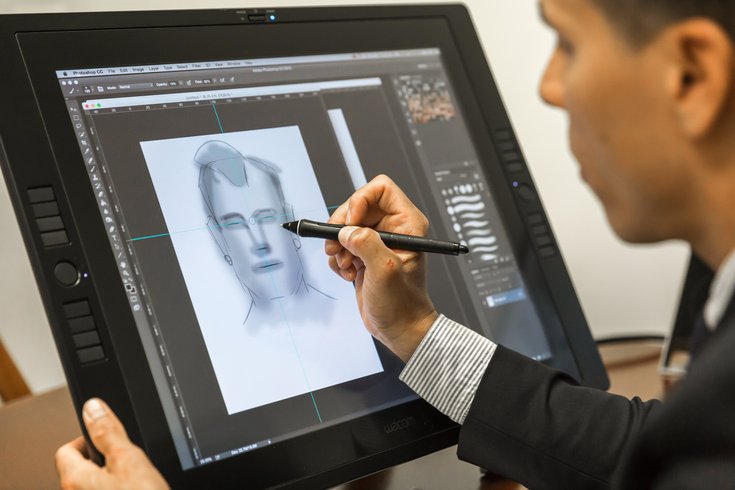 Thom Carroll/PhillyVoice
Thom Carroll/PhillyVoice
Detective Sgt. Gerald Theckston demonstrates how he creates a forensic sketch using Adobe Photoshop software, a technology that eased the process of making revisions to a sketch.
Bianca Roberson was driving along a Chester County highway on June 28 when the two-lane roadway narrowed into a single lane.
As Roberson merged into the lane, so did a red pickup truck. A terrifying display of road rage ensued, leaving the 18-year-old graduate of Bayard Rustin High School dead of a gunshot wound to the head.
With the region grieving the loss of a woman with a promising future, investigators launched a search to identify and apprehend her killer. Within days, they released a composite sketch of a suspect, a decades-old tool used when there is no other image to release to the public.
In many cases, technology has diminished the need for police sketches. But in cases where the perpetrator is not captured by surveillance systems, smartphones or identified by forensic evidence, investigators still rely on sketch artists.
"You can never get rid of the composite sketch artist," said Jonny Castro, who sketches suspects for the Philadelphia Police Department. "You always need to have one on hand. There might be that one job that relies on the victim or witnesses seeing the guy."
Sketches provide the public with a look at a suspect and, hopefully, generates new leads on his identity. But they have their limitations, too.
Composite sketches rely upon the ability of victims and eyewitnesses to recall intricate details of a criminal who often only appeared in their life for a moment – and a traumatic one, at that.
The results tend to be mixed.
When Chester County investigators released their sketch of Roberson's alleged killer, they described their suspect as a white man with blonde hair and a medium build.
But when David Desper surrendered to police, the 28-year-old Trainer, Delaware County resident looked nothing like the man depicted in the sketch. Most notably, he had dark hair, a full face and a thin beard.
The sketch was based on the descriptions provided by witnesses – a reliability that some studies have called into question.
And while the Desper composite bared little resemblance to actual man, others, like that of Oklahoma City bomber Timothy McVeigh, prove strikingly accurate.
That accuracy largely rests upon the eyewitness's ability to correctly recall – and adequately describe – the facial features of a suspect. But the best sketch artists have the communications skills to draw that out.
Officer Jonny Castro, a sketch artist for the Philadelphia Police Department, uses a set of facial feature templates – eyes, nose, mouth, etc. – to help victims and witnesses recall the appearance of a criminal's face. A sketch can then be built using each of the facial elements.
When detectives find little evidence beyond an eyewitness account to a crime, they often turn to a sketch artist.
And because time erodes memory, it's essential to get a description from witnesses as soon as possible.
"We sit down with them, ask them a few questions and make them feel as comfortable as we can," Castro said. "A lot of times, these are victims of violent crime."
"About half the time, I'll usually get the statement – 'an average looking guy.' I'm just like, 'OK, we'll work through this." – Det. Sgt. Gerald Theckston, New Jersey State Police sketch artist
To a certain point, each sketch artist has his or her own style.
Det. Sgt. Gerald Theckston, who sketches suspects for the New Jersey State Police, begins by asking the victim or witness to verbally describe everything they can remember about the perpetrator and the events that unfolded, including contextual cues like the lighting conditions, the weather and the general mood of the location.
"About half the time, I'll usually get the statement – 'an average looking guy,'" Theckston said. "I'm just like, 'OK, we'll work through this. No matter what they tell me, I still sit there and try to work through it with them."
Next, Theckston introduces a series of generic portraits that highlight specific facial features, like eyes or cheeks, asking which one best resembles the perpetrator.
"If they're having a hard time, you can say, 'OK, let's take this guy for example,' What about him is inaccurate?'" Theckston said. "Usually, by eliminating, it helps them out, too."
Using a Wacom tablet and a digital pen, Theckston drafts a sketch that appears on his computer screen – out of the victim's sight so the drawing does not influence her responses.
Once a draft is complete, Theckston reveals it.
Maybe the eyes are set too far apart. Perhaps the cheeks are too fleshy. Or maybe the hair needs more curls or more length or darkened a shade.
The digital tablet and pen, coupled with Photoshop, allow Theckston to make those corrections efficiently.
"My process evolves all the time," Theckston said. "My technique evolves all the time. I feel that keeps it fresh, and new, and hopefully more accurate."
Officer Jonny Castro, a sketch artist for the Philadelphia Police Department, works on a composite sketch at his desk in the basement of the police headquarters at 750 Race St. A pencil-and-paper sketch takes Castro about 90 minutes to complete.
Castro follows a similar process with one major exception – he still uses pencil and paper. He's experimented with a digital drawing board, but hasn't been able to whittle that process down to a few hours.
Others utilize software programs, like Identi-Kit, that allow police to build a facial composite using interchangeable templates of facial features.
And while it's necessary to get as much information as possible, sketch artists say a relatively quick interview with victims increases the accuracy of their work.
"You don't want them sitting down here for an extended period of time," Castro said. "They start to get tired out. They want the process to end."
Generally, a sketch takes Castro about 90 minutes to complete. Theckston typically spends about four hours, but he has spent as much as nine hours with a victim who needed to describe two perpetrators.
"Once the person signs off on it – once they say that's the guy, that looks like him – we give it to the assigned detective digitally," Castro said. "We scan it and they make wanted posters. They'll put it up in districts, give it to the media and put it up on the web site."
Forensic composite sketches made by Philadelphia Police Department artists hang on a wall at the Roundhouse.
Composite sketches are not intended to serve as a spitting image of a perpetrator, Theckston said. Rather, they're intended to generate tips that eventually could lead investigators to their target.
Then, it's up to the investigators to find supporting evidence linking a suspect to a crime.
"That's what we, as investigators, have to remember – it's not supposed to be an exact portrait," Theckston said.
In Philadelphia, composite sketches helped police identify serial killer Antonio Rodriguez, better known as "The Kensington Strangler."
"The risk of harm to innocents outweighs the potential utility. But these are used far too often because people love visual images. They like to see what the bad guy looks like." – John Watson, American University journalism professor
Rodriguez was convicted of raping and murdering three women in late 2010. A woman who had been choked to unconsciousness – not far from the spot another victim died – helped police generate a sketch of the perpetrator.
"It was a sketch of a guy wearing a hoodie and headphones," Castro said. "That sketch was critical in knowing who they were looking for. DNA ended up being the main factor, but the sketch was pretty critical for it."
(Ironically, in that case, the department's official sketch and the photo of an innocent man were posted side-by-side in the neighborhood and on Facebook before Rodriguez was identified and arrested. Vigilantes surrounded the innocent man's house until police had the posts removed from Facebook and publicly professed the man had nothing to do with the case.)
Composite sketches also helped police nab Milton Garcia, dubbed "Rittenhouse Rapist," who was convicted of breaking into a Rittenhouse Square apartment and raping a 26-year-old woman in 2014.
Similarly, Theckston's office includes a board filled with sketches of suspects later apprehended and convicted by police in various New Jersey municipalities. That includes one man, sketched by Theckston's partner, who was convicted in a child luring case in North Jersey.
"They were able to actually identify this individual, in part, based on the composite," Theckston said. "But most of these all have been helpful, usually in the first step of getting a lead or a tip, either from law enforcement or the public."
Despite these and similar successes, the reliability of composite sketches has been called into question over the years. Studies have found eyewitness descriptions to be unreliable – and those descriptions are all the sketch artist has to use.
As a result John Watson, a journalism professor at American University in Washington, advises journalists against using composite sketches. Or, at the very least, Watson suggests they include a disclaimer noting that composites are not always accurate depictions.
"The risk of harm to innocents outweighs the potential utility," Watson said. "But these are used far too often because people love visual images. They like to see what the bad guy looks like."
Ten years ago, Watson conducted a study in which he showed nearly 400 participants a series of 12 sketches. Pictured alongside each composite was the mugshot of the suspect – but his respondents did not know that.
Watson asked his participants whether the sketch and the mugshot depicted the same person. Only 30 percent thought the images depicted the same person.
"It's certainly something that's on its way to being a dying art. Clearly things like video and enhanced facial recognition are going to be more effective because of the timeliness of them." – Joe Alkus, Temple University professor
Another 20 percent thought they had seen one of the depicted individuals; those images came from across the country. Meanwhile, all 395 study participants hailed from Washington, D.C. or parts of Texas.
"It's virtually impossible that these people had actually seen the person who had committed the crime," Watson said. "But a substantial percentage of them had said, 'I have seen this person.'"
Watson pointed to another study in England that asked participants to describe the face of a celebrity to a sketch artist, without identifying the celebrity's name. The resulting sketches came back unidentifiable, he said.
So how trustworthy is a composite based on the description of a stranger that an eyewitness encountered during duress?
"In the great bulk of cases, these eyewitnesses were terrified or in some way had high levels of tension when they saw the suspect," Watson said. "Their ability to remember detail, to objectively describe them, is virtually thrown out the window."
But sketch artists who regularly meet with victims and eyewitnesses disagree.
"Most of the time, people that come down here know what this person looks like," Castro said. "It's not that you saw this guy from a block or two away. This person was a foot or two away from them with a gun. Or they were on top of them."
The sketch artists acknowledge that some composites hardly resemble the perpetrator. But some witnesses are more observant, have better memories or can better describe what they saw than others, Theckston said.
"Generally, what they remember, they won't forget," Theckston said. "That doesn't mean they have remembered everything 100 percent accurately. But it's our job to trust them, because they're all we have."
It's also their job to help them remember details. The best sketch artists complement their artistic abilities with a high level of interviewing skills.
They also know when to cut the interview short.
"If the person is not confident and we're just guessing at everything, it's better not to do the sketch," Theckston said. "Just don't do it."
Detective Sgt. Gerald Theckston, a forensic sketch artist for the New Jersey State Police, describes the process he uses to sketch criminals based on descriptions from victims and/ or witnesses. “Generally, what they remember, they won't forget,” he said. “That doesn't mean they have remembered everything 100 percent accurately. But it's our job to trust them, because they're all we have.”
In many cases, technology has eliminated the need for sketch artists. And that is reflected by their diminishing presence in police departments across the United States.
Only about 100 full-time sketch artists remain, the Associated Press reported last year. Chicago police haven't had a staff sketch artist since 1993. Houston is down to one.
Other departments contract out their sketch work.
Theckston and his partner at the New Jersey State Police complete sketches for police departments across the state, including Camden County police. They're on pace to finish about 300 sketches this year.
In Philadelphia, Castro said he completes about 10 sketches each year. But just 10 years ago, Philly police released between 200 and 250 sketches each year, he said.
Advances in video surveillance systems, DNA testing and, to some degree, facial recognition technology have made composites less necessary.
"It's certainly something that's on its way to being a dying art," said Joe Alkus, a criminal justice professor at Temple University. "Clearly things like video and enhanced facial recognition are going to be more effective because of the timeliness of them. We get those things out a lot quicker."
Alkus pointed to the Boston Marathon bombing in 2013, when investigators sorted through hours and hours of surveillance footage to determine their suspects. Three days afterward, the FBI released photographic images of the suspects, leading to numerous tips, though they also may have helped them run.
"That start of the more rapid video type of recognition software takes away some of the vogue, or the velocity, of the hand sketches," said Alkus, who spent 27 years working as a federal agent for the Department of Homeland Security and its predecessor, the U.S. Customs Service.
New Jersey State Police Detective Sgt. Gerald Theckston points to a sketch that led to the identification and capture of a suspect in northern New Jersey.
Such technology limits composite sketches to cases where images aren't readily available or surveillance footage is insufficient. That often includes Special Victims Unit cases, residential burglaries, lurings or robberies.
But sketch artists do not simply spend their shifts creating composites.
Theckston spends much of his time modifying photographs – removing glasses and hats – so that investigators can run them through a digital database that finds potential matches.
"We understand how to draw a portrait," Theckston said. "So, I understand what I have to do to take off your glasses and make your eyes look realistic and match your face, for the most part. ... We have the technical expertise to enhance those photos or to modify those photos in a way that's beneficial to investigators. We do a lot of those."
While the technology might change, its purpose – to gain leads from the public – remains the same.
"The police often rely on the assistance of the public," Alkus said. "Community policing isn't just an abstract. It's something that's crucial in doing their job correctly."
It remains unclear exactly how, if at all, the composite sketch led Desper to surrender.
Investigators also released images of Desper's red pickup truck, which they recovered shortly before Desper turned himself over to police.
Chester County prosecutors declined to comment for this story, citing an open criminal case.
But District Attorney Tom Hogan previously said investigators received thousands of tips in the days after Roberson's death. They examined footage captured by roadside cameras and viewed vehicle and firearms records to identify Desper.
"The West Goshen Police Department and Chester County Detectives were relentless," Hogan said when he announced murder and related charges against Desper on July 2. "Their job's not done yet. They are going to keep investigating until justice is done for Bianca."
Desper waived his right to a preliminary hearing last Thursday. He'll have a formal trial arraignment on Thursday.
 Thom Carroll/PhillyVoice
Thom Carroll/PhillyVoice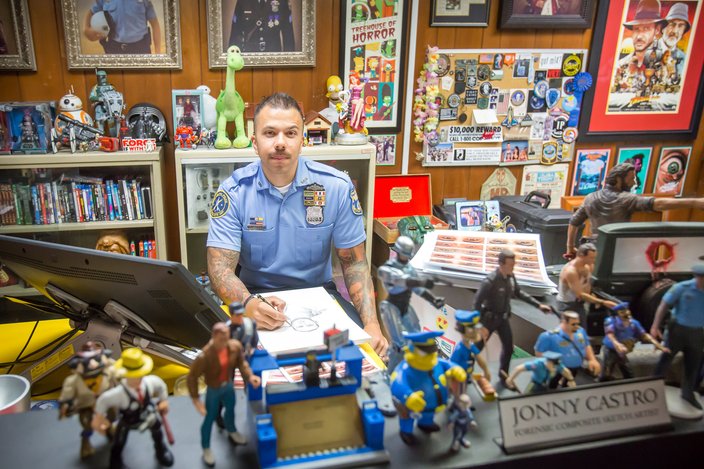 Thom Carroll/PhillyVoice
Thom Carroll/PhillyVoice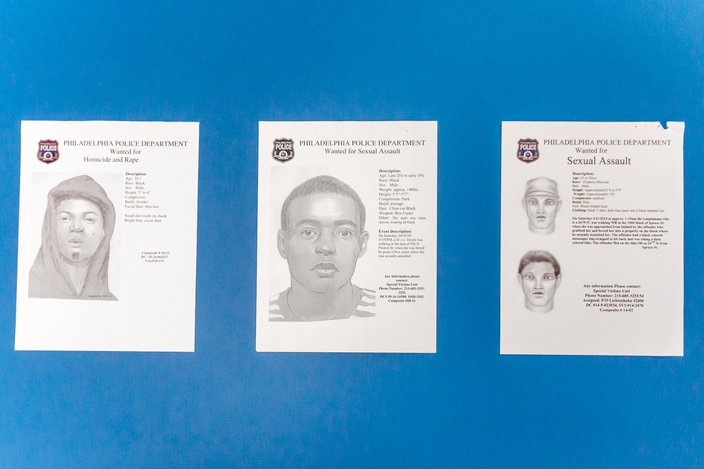 Thom Carroll/PhillyVoice
Thom Carroll/PhillyVoice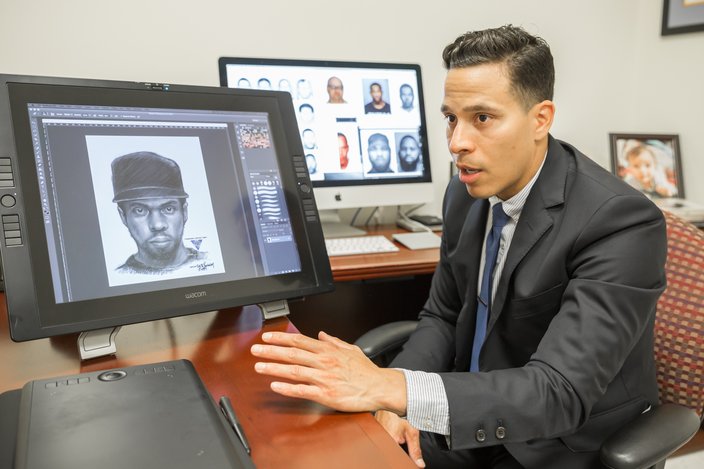 Thom Carroll/PhillyVoice
Thom Carroll/PhillyVoice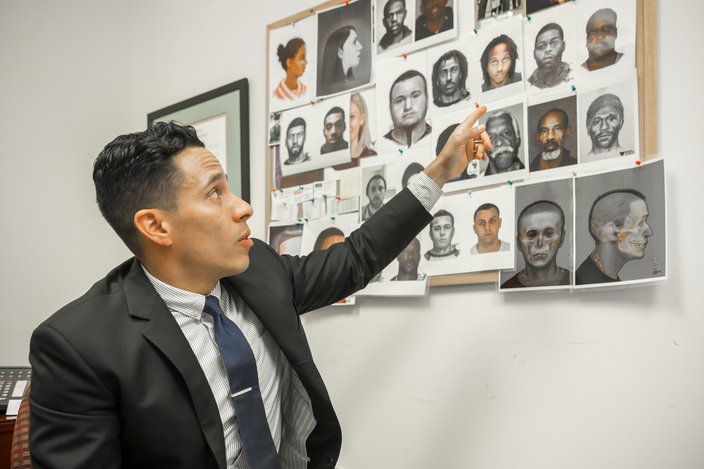 Thom Carroll/PhillyVoice
Thom Carroll/PhillyVoice